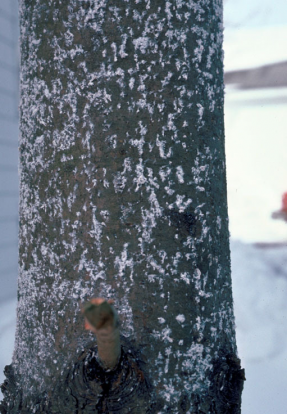Arbor-wellness: Spruce Spider Mite
Spruce trees are one of the most popular trees in the Pacific Northwest. Seeing conifer trees with shades of green, gray and blue-green in the winter is refreshing and brightens the otherwise dull winter. Spruce trees are common to this area and very hardy trees. The blue spruce – native to Colorado – is a favorite on public and private landscapes.
We do see a particular problem on these trees that can cause the tree to decline fairly rapidly. The spruce spider mite is a very fast reproducing insect that will quickly harm spruce trees and most other conifers if not treated. They feed on the needles and create a stippling effect, eventually turning the leave brown as they die off. We are seeing more of this pest the last few seasons, so it is important to pay closer attention to spruces, arborvitae and firs in particular.
Treatments done early can prevent damage most of the season, but if damage is noticed in the fall, it is important to treat quickly as that is when they do the most damage.
The needles on my spruce tree are turning bronze colored and falling, what is wrong?
This is most likely being caused by spruce spider mite, a fast reproducing insect that feeds on the needles of spruce trees and other conifers. They feed by “rasping” the needle with specialized mouth parts and the needle starts to turn yellowish, the bronzy as it dies. When they turn bronze like that, it is a sign that you have a fairly bad infestation. With spruce spider mite, you might also notice some light webbing too.
Can my spruce be saved?
At this point, it is imperative to treat quickly to with a fast-acting treatment to get the problem under control. But yes, in most cases we can save the tree.
What other trees do they affect?
They will feed on most conifer trees, but mostly on spruce trees, fir trees, and arborvitae. They are most active in the cool season, so damage is done in the spring and again the fall. (Often the summer is when you notice the damage though because the weakened tree has a harder time with the stress of summer heat.
When do I treat them?
When you see damage in the summer or fall, it is important to treat them right away with a fast-acting product. You should also avoid spraying products on the tree during this time, because you will harm the predatory insects that feed on spider mites. Those are the good guys we want to keep. In the fall or early spring, we can do a proactive treatment that prevents the population from building up too high. This allows the tree to recover more quickly. Without any treatments, populations can build so high they may eventually kill the tree.
What else should I know?
Spruce spider mites are a cool season spider mite, but there are warm season mites that feed on other tree types and do most of their damage in the summer. Your Arborwell arborist knows what to look for and can help spot problems before they get too bad. Remember too that keeping trees healthy helps prevent trees from becoming stressed, which allows insects to attack trees more easily. Proper feeding and proper watering will go a long way to reducing spider mite problems.
If you are concerned about spider mites on your Spruce (or other) trees, fill out the form below to contact your Arborwell arborist to help you solve this problem for you.








